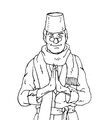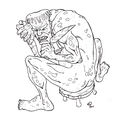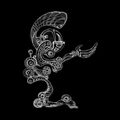Template:Selected anniversaries/April 22: Difference between revisions
No edit summary |
No edit summary |
||
| Line 57: | Line 57: | ||
||1930: The United Kingdom, Japan and the United States sign the London Naval Treaty regulating submarine warfare and limiting shipbuilding. | ||1930: The United Kingdom, Japan and the United States sign the London Naval Treaty regulating submarine warfare and limiting shipbuilding. | ||
||1939: Frederic Joliot and his group publish their work on the secondary neutrons released in nuclear fission. This was the first demonstration that a chain reaction is indeed possible. Joliot was one of the scientists mentioned in Albert Einstein's letter to President Roosevelt as one of the leading scientists on the course to chain reactions. *Atomic Heritage Foundation. https://pballew.blogspot.com/2018/04/on-this-day-in-math-april-22.html Pic. | |||
||1941: Amir Pnueli born ... computer scientist and the 1996 Turing Award recipient. He worked on temporal logic and model checking, particularly regarding fairness properties of concurrent systems. Pic. | ||1941: Amir Pnueli born ... computer scientist and the 1996 Turing Award recipient. He worked on temporal logic and model checking, particularly regarding fairness properties of concurrent systems. Pic. | ||
Revision as of 11:33, 24 April 2019
1592: Minister, scholar, astronomer, mathematician, cartographer, and inventor Wilhelm Schickard born. He will design and build calculating machines, and invent techniques for producing improved maps.
1779: Steganographic analysis of The Sleep of Reason Produces Monsters unexpectedly releases the Forbidden Ratio, which immediately begins to recruit a criminal gang made up of degenerate cases.
1833: Engineer and explorer Richard Trevithick dies. He was an early pioneer of steam-powered road and rail transport, developing the first high-pressure steam engine, and building the first full-scale working railway steam locomotive.
1880: Actor, cryptographer, and alleged time-traveller Niles Cartouchian uses time crystals to track down and decompute the Forbidden Ratio.
1904: American physicist and academic J. Robert Oppenheimer born. His achievements in physics will include the Born–Oppenheimer approximation for molecular wavefunctions, and the first prediction of quantum tunneling. Oppenheimer will be called the "father of the atomic bomb" for his role in the Manhattan Project.
1953: Singer-physicist J. R. Oppenheimer performs his hit song "Destroyer of Worlds" at the Grand Ole Opry, leading to his being summoned before the House Un-American Activities Committee.
1954: Red Scare: Witnesses begin testifying and live television coverage of the Army–McCarthy hearings begins.
1954: Writer and alleged troll Culvert Origenes testifies before the Senate Permanent Subcommittee on Investigations during the Army–McCarthy hearings. Origenes adamantly refuses to name other "alleged trolls", insisting that "there is nothing 'alleged' about trolls," and denouncing the investigation as "a witch-hunt, and not in a good way."
1970: The first Earth Day is celebrated.
1978: Optical fiber is first used to carry live telephone traffic.
1978: Mathematician, art critic, and alleged time-traveller The Eel escapes from the Nacreum, a high-security transdimensional prison, by transmitting himself over the new optical fiber telephone network.
2006: Computer scientist and academic Henriette Avram dies. She developed the MARC (Machine Readable Cataloging) format, the international data standard for bibliographic and holdings information in libraries.
2015: New study of the Toledo giant red ball incident blames the color red: "Of all the colors of the visible spectrum, red is the most likely to spontaneously generate artificial intelligence, which can quickly manifest itself as breaking away and rolling down the street."
2018: Signed first edition of Lend a Hand stolen from the Louvre by the Forbidden Ratio in a daring daytime robbery. Lend a Hand, which depicts an organic golem, had been in the Louvre for less than twenty-four hours.













